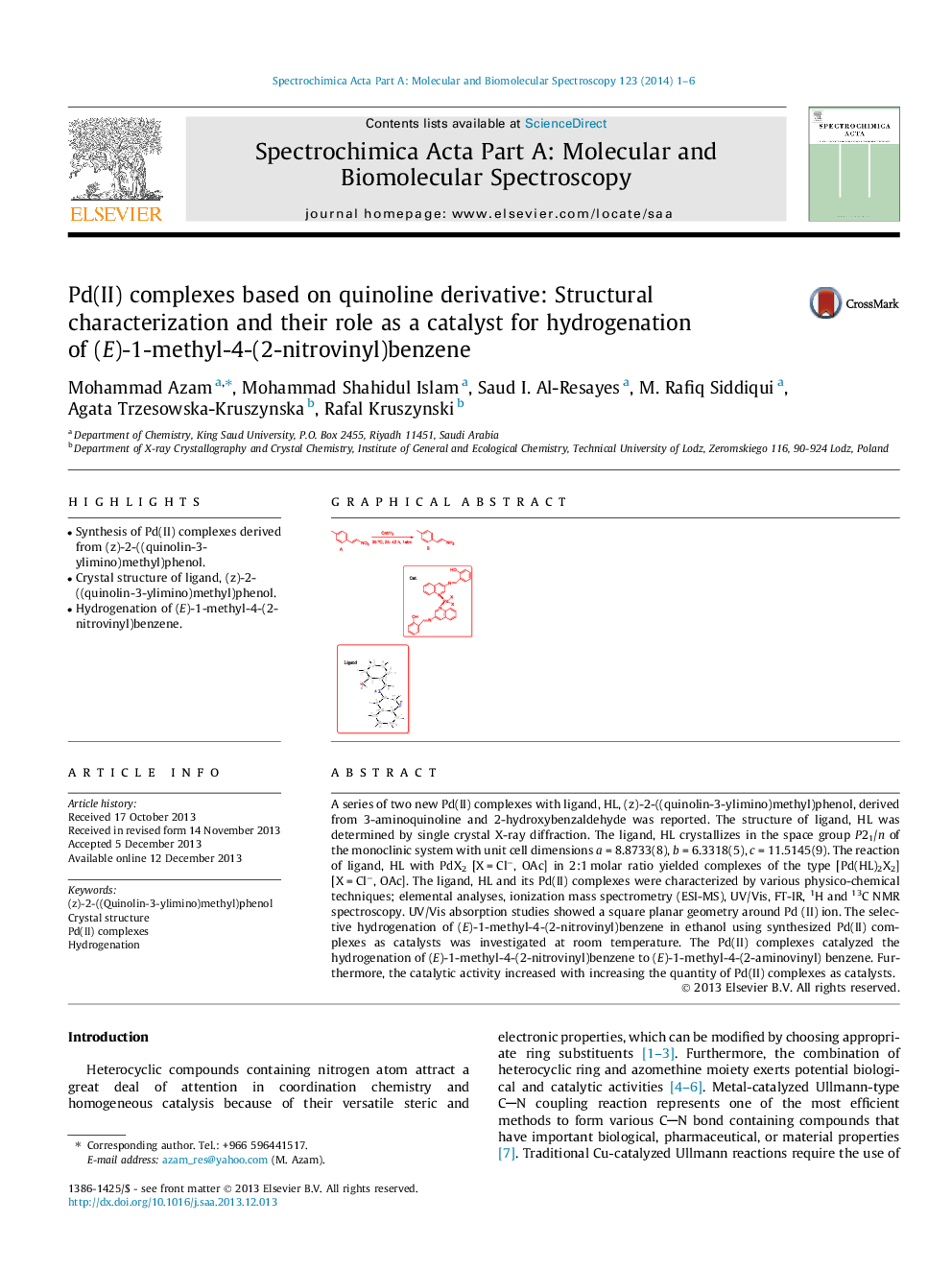| Article ID | Journal | Published Year | Pages | File Type |
|---|---|---|---|---|
| 1232811 | Spectrochimica Acta Part A: Molecular and Biomolecular Spectroscopy | 2014 | 6 Pages |
•Synthesis of Pd(II) complexes derived from (z)-2-((quinolin-3-ylimino)methyl)phenol.•Crystal structure of ligand, (z)-2-((quinolin-3-ylimino)methyl)phenol.•Hydrogenation of (E)-1-methyl-4-(2-nitrovinyl)benzene.
A series of two new Pd(II) complexes with ligand, HL, (z)-2-((quinolin-3-ylimino)methyl)phenol, derived from 3-aminoquinoline and 2-hydroxybenzaldehyde was reported. The structure of ligand, HL was determined by single crystal X-ray diffraction. The ligand, HL crystallizes in the space group P21/n of the monoclinic system with unit cell dimensions a = 8.8733(8), b = 6.3318(5), c = 11.5145(9). The reaction of ligand, HL with PdX2 [X = Cl−, OAc] in 2:1 molar ratio yielded complexes of the type [Pd(HL)2X2] [X = Cl−, OAc]. The ligand, HL and its Pd(II) complexes were characterized by various physico-chemical techniques; elemental analyses, ionization mass spectrometry (ESI-MS), UV/Vis, FT-IR, 1H and 13C NMR spectroscopy. UV/Vis absorption studies showed a square planar geometry around Pd (II) ion. The selective hydrogenation of (E)-1-methyl-4-(2-nitrovinyl)benzene in ethanol using synthesized Pd(II) complexes as catalysts was investigated at room temperature. The Pd(II) complexes catalyzed the hydrogenation of (E)-1-methyl-4-(2-nitrovinyl)benzene to (E)-1-methyl-4-(2-aminovinyl) benzene. Furthermore, the catalytic activity increased with increasing the quantity of Pd(II) complexes as catalysts.
Graphical abstractFigure optionsDownload full-size imageDownload as PowerPoint slide
